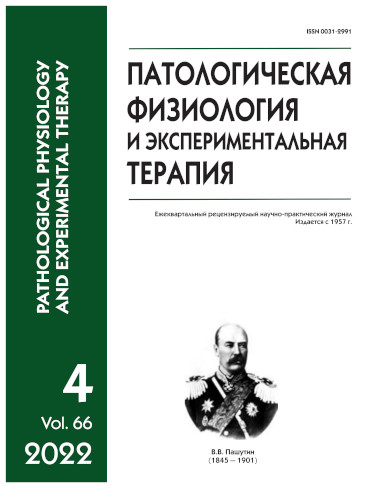Effect of hypoxic training on dopamine metabolism in rat brain structures
Abstract
Increased anxiety is one of the most common symptoms of post-traumatic stress disorder (PTSD). Although the role of DA in the development of anxiety behavior has not been fully identified, some data evidence its significant contribution to the pathogenesis of anxiety disorders through the mesolimbic, mesocortical, and nigrostriatal systems. The aim of this research is to investigate the effect of hypoxic training on the level of dopamine metabolism in the brain structures of rats. Methods. The study was performed on 34 sexually mature male Wistar rats divided into 4 groups (control, PTSD, adaptation to intermittent hypoxia (AIH), PTSD + AIH). The chronic predator stress model was used as a model of experimental PTSD. The elevated plus maze (EPM) test was used to assess the anxiety index (AI) of the rats. DA and its metabolites (dihydroxyphenylacetic acid (DOPAC) and homovanillic acid (HVA) were measured using high performance liquid chromatography. Results. The study of the effect of adaptation to intermittent hypoxia on the metabolism of dopamine and its metabolites showed the decrease of indices in the cerebral cortex, hippocampus, and hypothalamus of animals exposed to stress. In the midbrain, chronic stress exposure did not lead to changes in the levels of dopamine and its metabolites compared to controls. At the same time, hypoxic training was accompanied by an anxiety index decrease. Conclusion. The presented data allow us to consider adaptation to hypoxia as an effective way to correct post-traumatic stress disorder in the cerebral structures.






